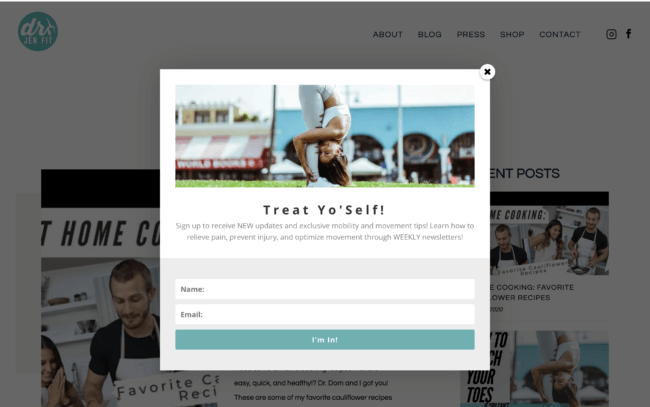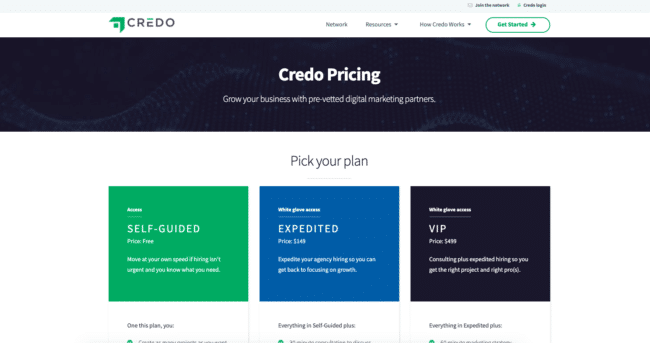Online courses are HOT right now.
With so much of the world coming online in a rush and getting used to doing things not in person and instead via Zoom, people are looking to gain that same knowledge as before (and maybe in a faster and easier way) via online courses.
Simply put, online courses are about to be one of the most profitable businesses to build.
So how do you market an online course and ultimately convert your site visitors into paying customers and then rabid fans who promote you and your course?
Here’s the recap of the webinar, which you can view in full embedded above. Big thanks to LifterLMS for hosting it!
Table of Contents
1) How to drive traffic/audience
After you’ve launched your site and have your initial content up and for sale, the first thing to do is get traffic and an audience to the site.
So how do you do that?
There are three main ways to drive an audience to your course, and the right one to invest in depends on your (or your team’s) strengths.
- Referrals/partnerships – can be great for exposure and building an audience on other channels. Spike-y and lots of ongoing effort.
- Content and organic/SEO – take the longest to get going, but sets a stable base of business to build from.
- Paid acquisition – in this day and age usually social media, but don’t count out Google Ads!
But before we get into that, don’t forget that there are a lot of platforms out there (social media especially) that can be very useful for growing an audience.
But remember – their rules can change at any time. New platforms often incentivize new users with “reach” until they have enough usage to roll out advertising.
My rules for this are:
- Build your content on your own domain where possible. It’s often much cheaper, customizable, and gives you marketing opportunities others don’t.
- Use other platforms to drive people there and then your own list to keep them engaged.
- If you have to use something like Kajabi, make sure you own the email addresses while still using your own payment portal.
Referrals/partnerships
Referrals and partnerships require relationships but can be great drivers of early growth. If you already have an audience in your space, then this becomes even easier.
Strategies include:
- Reciprocal promotion (email, social, ads)
- Leveraging social media growth strategies like partnered lives,
- Promote others before they promote you (be the giver)
- Be a guest for others to teach things of value to their audience, for free.
There are so many social media and referral strategies out there that I can’t go deep on them. But there are some that are absolutely proven:
- Shout out to your friends and get them to shout you out (take part in giveaways?)
- Use relevant hashtags in your posts
- Engage (it’s social media after all) in comments
- Encouraging others to comment on posts or share your content helps your own organic reach (because the networks prioritize what your friends have also engaged with, to drive engagement!)
- Use a tool like MeetEdgar or Buffer to consistently post content.
There are a lot of opportunities out there for increasing referrals from relevant sources:
- Quora – find the Quora threads ranking in search engines and add value to them with content. Don’t be promotional!
- Reddit – same as above. Become a trusted contributor to subreddits and you can get away with a lot.
- Content sites are always looking for more content. If you are a good writer, consider becoming a contributor. This is great for branding, SEO, and referrals.
Content/SEO
SEO and content marketing can be HUGE drivers of growth, but do take concerted time and effort.
Lucky for you, you’re a content company! You can leverage your content library (and other free content) to drive growth.
Don’t forget – every piece of content you create for social can also be put on your website so it can drive traffic there too. Repurpose!
Recommended resource: Moz Beginner’s Guide to SEO
Things to remember so you can leverage your content for SEO growth include:
- If you want a page to rank, then it needs to be publicly accessible (not behind a login)
- Links from other sites to yours will help you rank (partnerships are great for this)
- “How to” content is great for driving top-of-funnel awareness (video is best, probably easy for you to do, and can be leveraged on YouTube). Get a transcript (rev.com is great) and have it edited well.
Things to remember so you can leverage your content for SEO growth include:
- Research the keywords your competitors are ranking for (getcredo.com/semrush for a free 30-day SEMrush trial). Keyword Gap is the tool you want.
- Put as much time into promoting content as you do into creating it. For every piece you publish, think “how can I get 2-3 links to this piece?” That’s usually all you need to rank.
- Use modifiers on your main keywords (“best”, “free”, “2020”)
Paid acquisition
Ads can be useful to drive those with high intent. If you don’t know what you’re doing, then it can be a colossal waste of money too.
The first advertising you should do is social retargeting and look-alike audiences based on your customer base.
Until you have a substantial business, search ads and ads for top-of-funnel awareness are too risky (for my blood and money, at least).
When you do dabble into ads, I’d start with social (FB/IG), especially if what you teach is visual or you do a lot of videos.
If you do run Google Ads, then keyword research is of the essence. If you have some branded search volume, then bidding on your brand is a good defense against competitors.
Before running ads, understand your on-site conversion rates and ARPU (Average Revenue Per User) so you know how much you can pay to profitably acquire a user (~3mo is a reasonable payback period).
2) Lead acquisition
Now that this person is on your website, it’s time to convert them into a lead.
For most of you, the conversion funnel looks like:
- Site visitor
- Lead (email/challenge)
- Customer
Remember these principles:
- ABB – Always Be Building your email list and social followings
- Offering something of value in exchange for an email is a tried and true method where everyone should start.
- “Exclusive content” is easy to offer. One email per week that doesn’t get posted publicly, for example.
To properly generate leads that you can then turn into customers, you need form software (many ESPs have this) and an ESP (Email Service Provider) like MailChimp, Drip, ConvertKit, or a myriad of others.
That’s it. Many of these offer free accounts up to a certain number of subscribers.
Pop-ups and Exit-Intents
The most popular and easiest way to build an email list is pop-ups and exit-intent pop-ups.
Marketers might find them annoying, but the truth is that they work.
Here’s an example. This does a lot of things right.

Challenges
Challenges are all the rage right now. Especially if you are in the personal development space, people seem to love competing and being challenged to do something for a set period of time.
And when you say it’s free, they gobble it up. ¯\_(ツ)_/¯

Giveaways/Webinars/Partnerships
If you take part in giveaways or partner up with others on webinars/something gated via email, get them to share the email addresses with you (and vice versa).
Just be careful to make it explicit that emails may be shared with presenters/panelists. This can go in the terms of service.
If you don’t want to use that, you can still use the emails for Facebook/IG retargeting and build look-alike audiences from them.
Emails are valuable!
3) Conversion to paying customers
You’ve done the work to get them to your social media and then your site and then to convert them into a lead (an email address).
So how do you get them to pay?
There are some tried and true ways, but you’ll have to put in the work to find what resonates best with your audience and for your offer.
Launches vs evergreen vs open/closed vs cohorts
There are a lot of schools of thought around getting people to buy:
- Doing launches (Jeff Walker’s Product Launch Formula and book Launch)
- Evergreen funnels (check out Brennan Dunn’s post)
- Open and closed cart (scarcity)
- Cohorts (a twist on open/close)
Any of these can work, and I recommend trying them all. I’ve done them all.
Pro conversion moves
There are some pro moves you can use to get people to check out:
- Abandoned cart emails. If they add a product to the cart but don’t complete checkout, send them an email soon after to remind them. Consider offering a discount here (10% or so).
- If they view the Pricing or Checkout page, retarget them with ads promoting action and the benefits. Social proof is HUGE here.
- Consider a free trial or “get a taste of our exclusive content” with a hard sell email at the end.
Pricing your online class
Let’s talk pricing quickly. You might have just one option for leads to buy, but I think that is a bad strategy.
Why?
Because it’s one chance to say no. “Yes” or “No”.
If you give them multiple options (and thus anchor them to something higher), then they have to say no three times. Much harder for them to do that.
Let’s get them to “I don’t quite need that top level, but the middle one sounds better than the free one.”
Here’s one iteration of Credo’s pricing page. Previously it was just free to clients, then I added the second level and then the third.
People buy the third! I wasn’t giving them the option before!

Personality (and trust!) sells
Above all, show your personality because personality sells.
Budgets are tight right now, but people are still buying things that are valuable to them. It’s tempting to make things free or reduced right now, but I encourage you to not do this.
Freemium is an acquisition strategy, not a business model. People who only sign up because it is free are much less likely to take action.
Need more? We can help.
Marketing is hard especially if you’re not a marketer. But the good news is that you can learn a lot of this stuff yourself and build a great business, especially right now.
If you’re growing and need to hire a firm to keep up, schedule a hiring strategy session with our team to get connected with the right ones.

